Krzysztof Jung
In the Middle of the World
Dec 4, 2021 – Jan 29, 2022


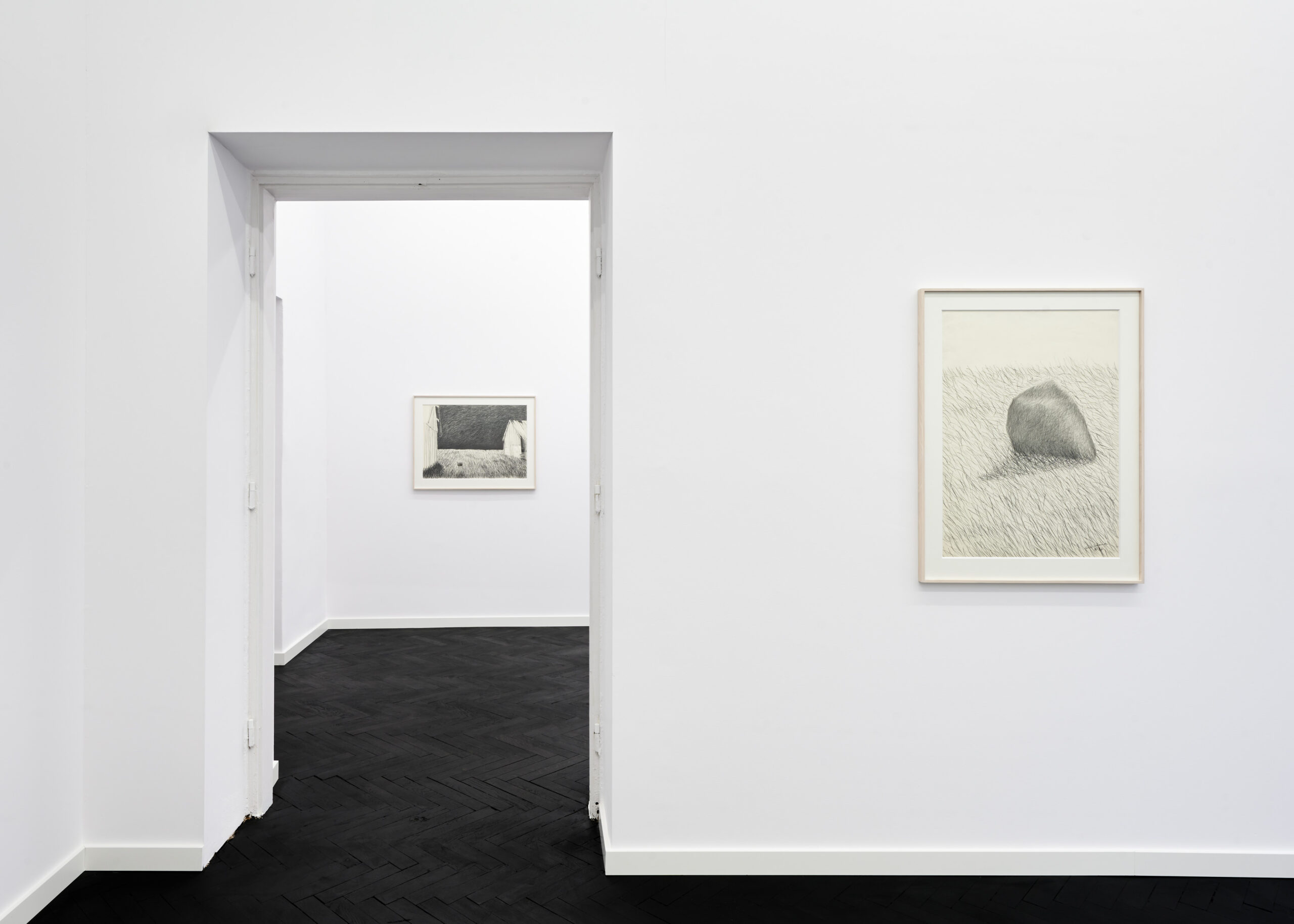
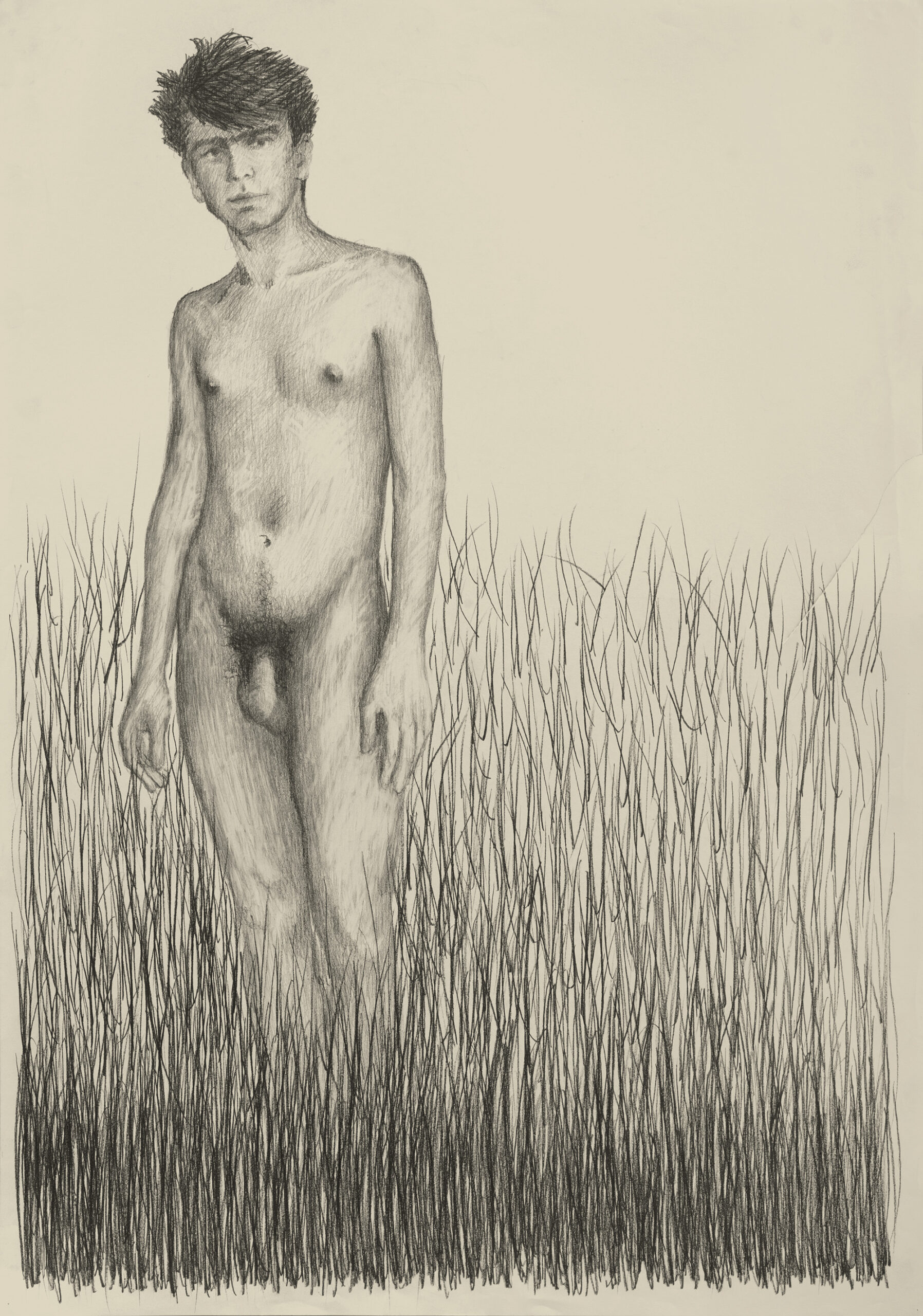
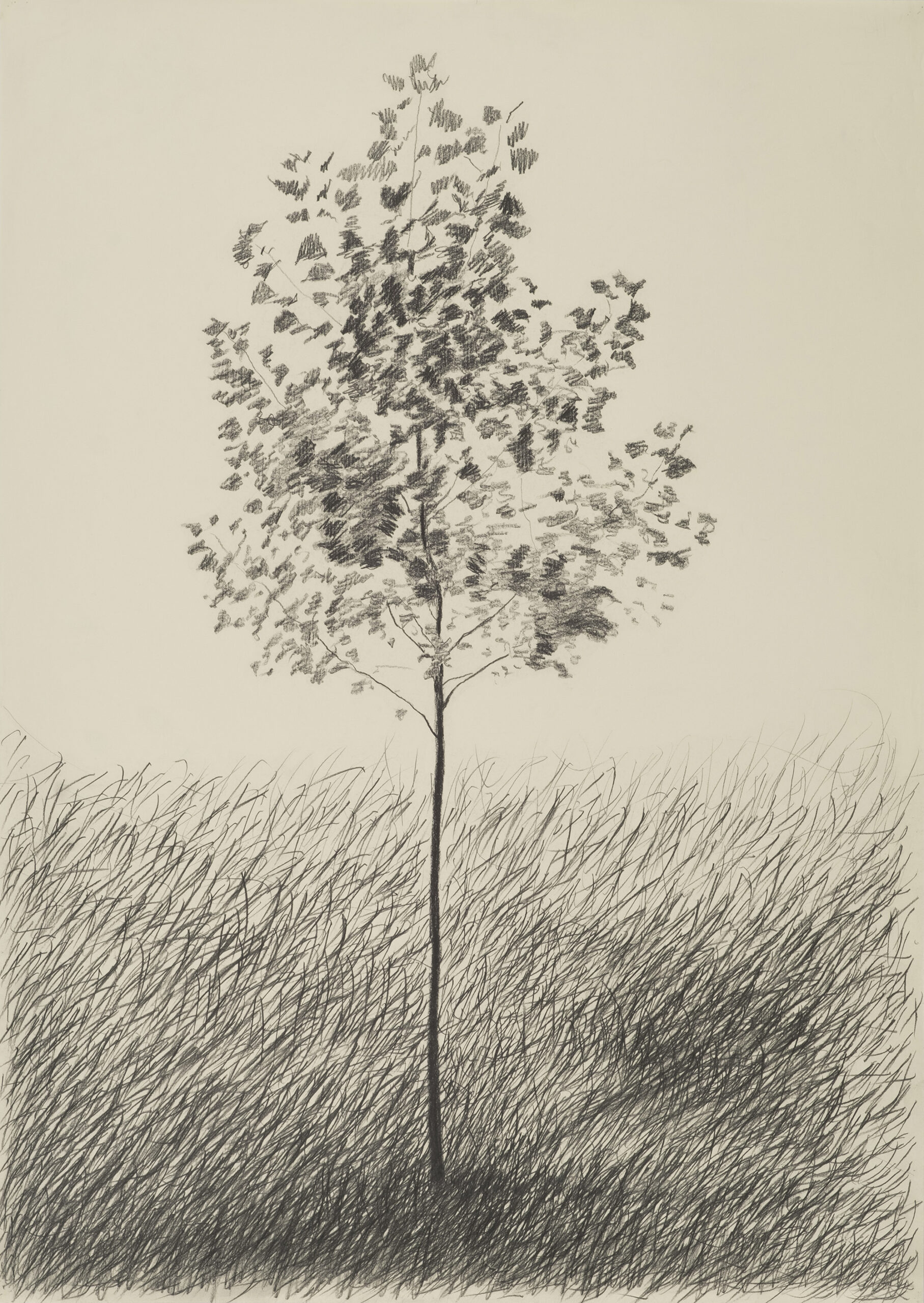
The apple tree, Krzysztof Jung’s favourite, grew on a holiday plot called Jungówka in the village of Szpruch. He often invited friends there and the atmosphere of these encounters is reflected in the photographs of the Varsovian nudists sunbathing in the grass and wading in the stream like water nymphs.
It was the Mazovian landscape that became the main subject of Jung’s work when he focused on drawing and painting in the 1980s. Previously, he had been known mainly for his performances at the Repassage gallery, the so-called threadings, during which he spun spiderwebs over the space and over his friends and acquaintances. As he shifted his attention to the landscape, his drawings became more subtle and filled with undercurrents.



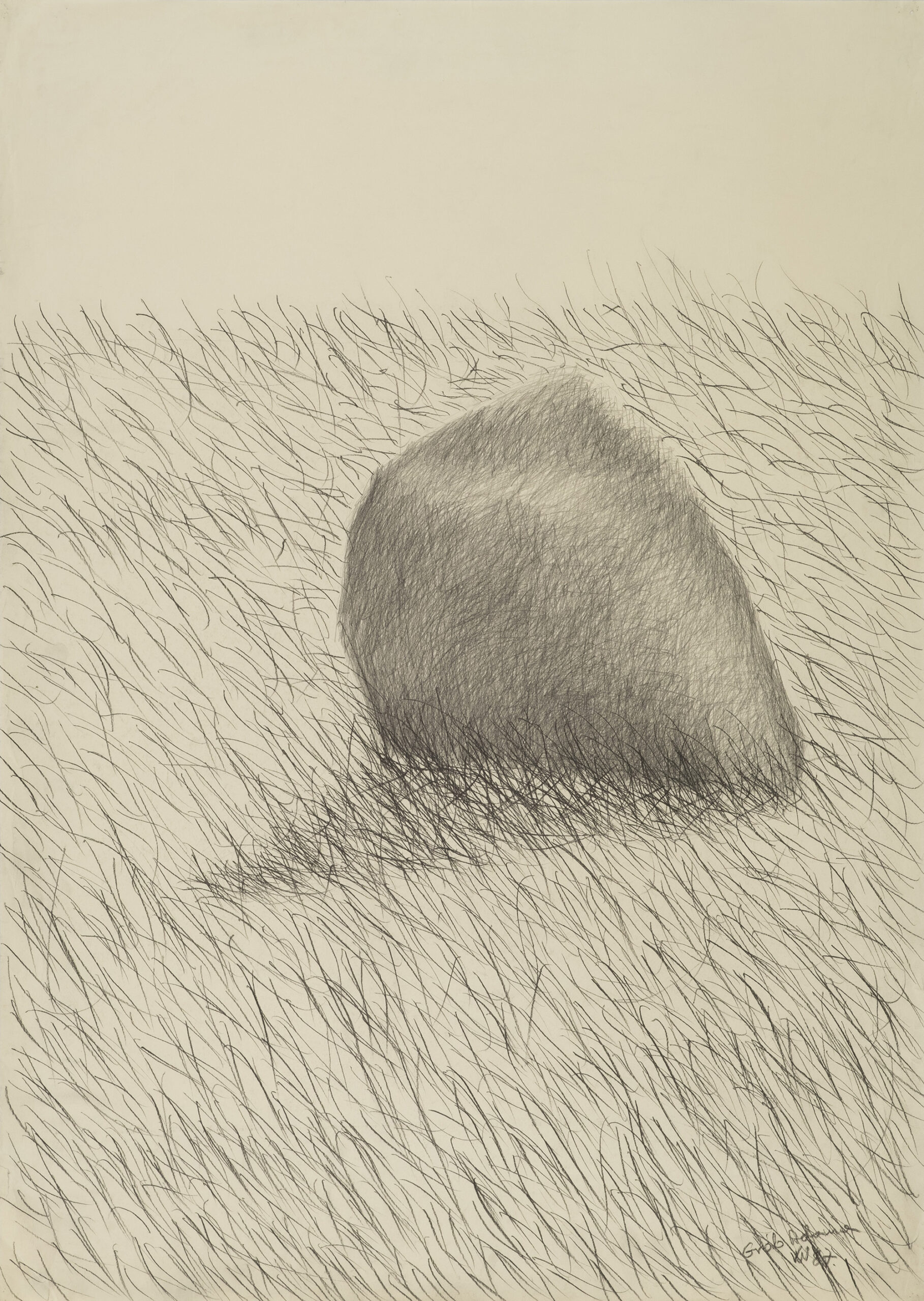
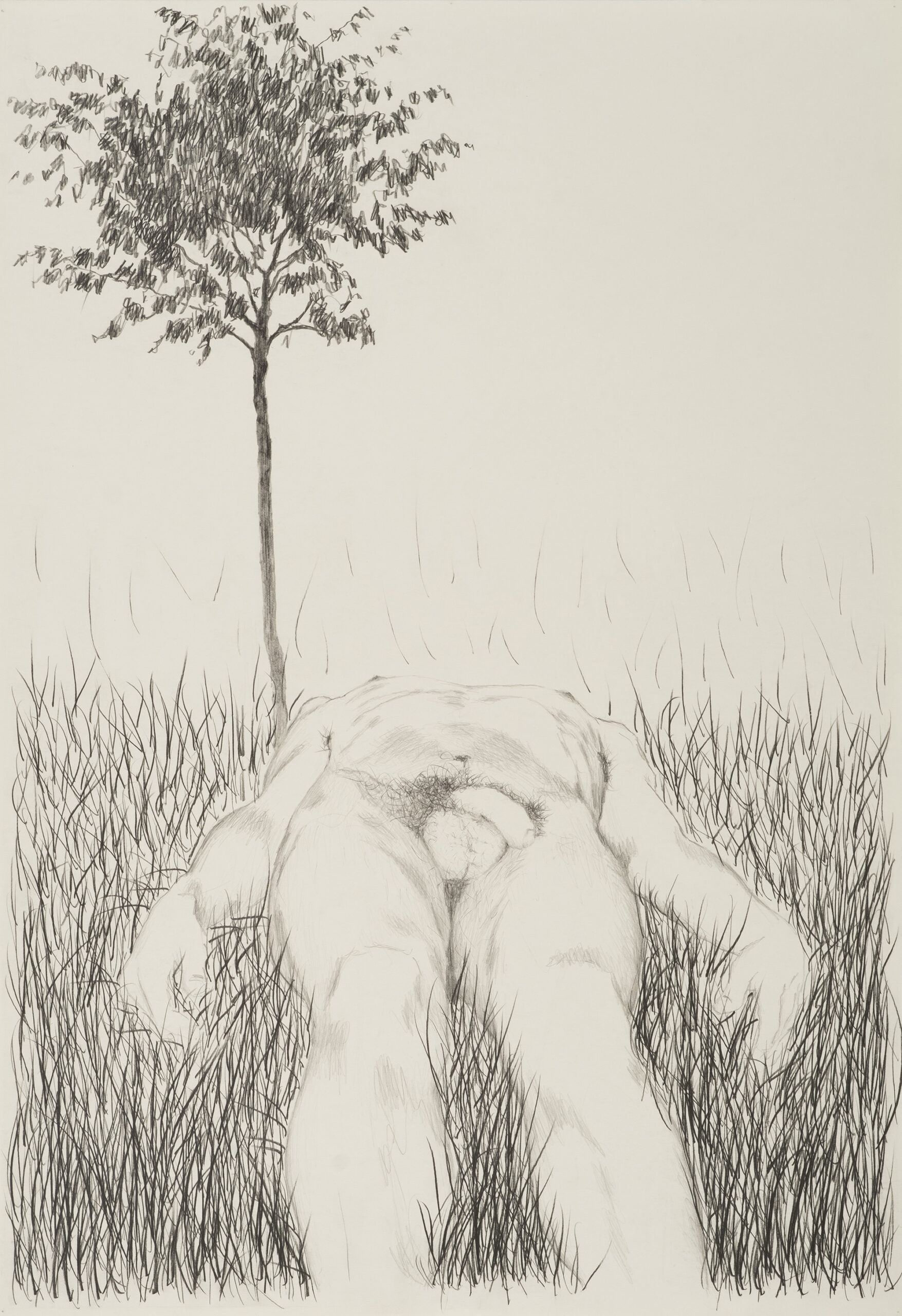
The landscape in Jung’s view is imbued with Christian symbolism: the tree, paradise, the lamb, sin, and redemption. An ordinary apple tree grows into the biblical Tree of Knowledge. In one of his letters, he wrote that trees are “the symbol of the beginning of everything”, “the metaphysical universe”, “the fathers of all Mystery”.
As in Poussin’s famous work, the shadows of death also fall on Jung’s rural Arcadia near Warsaw. A lone boulder becomes the “grave of Adam”, the first man. What’s more, the artist titled his drawing of a simple black building with a Latin abbreviation familiar from tombstones: D.O.M. Domus Omnium Mortuorum, the house of all the dead.
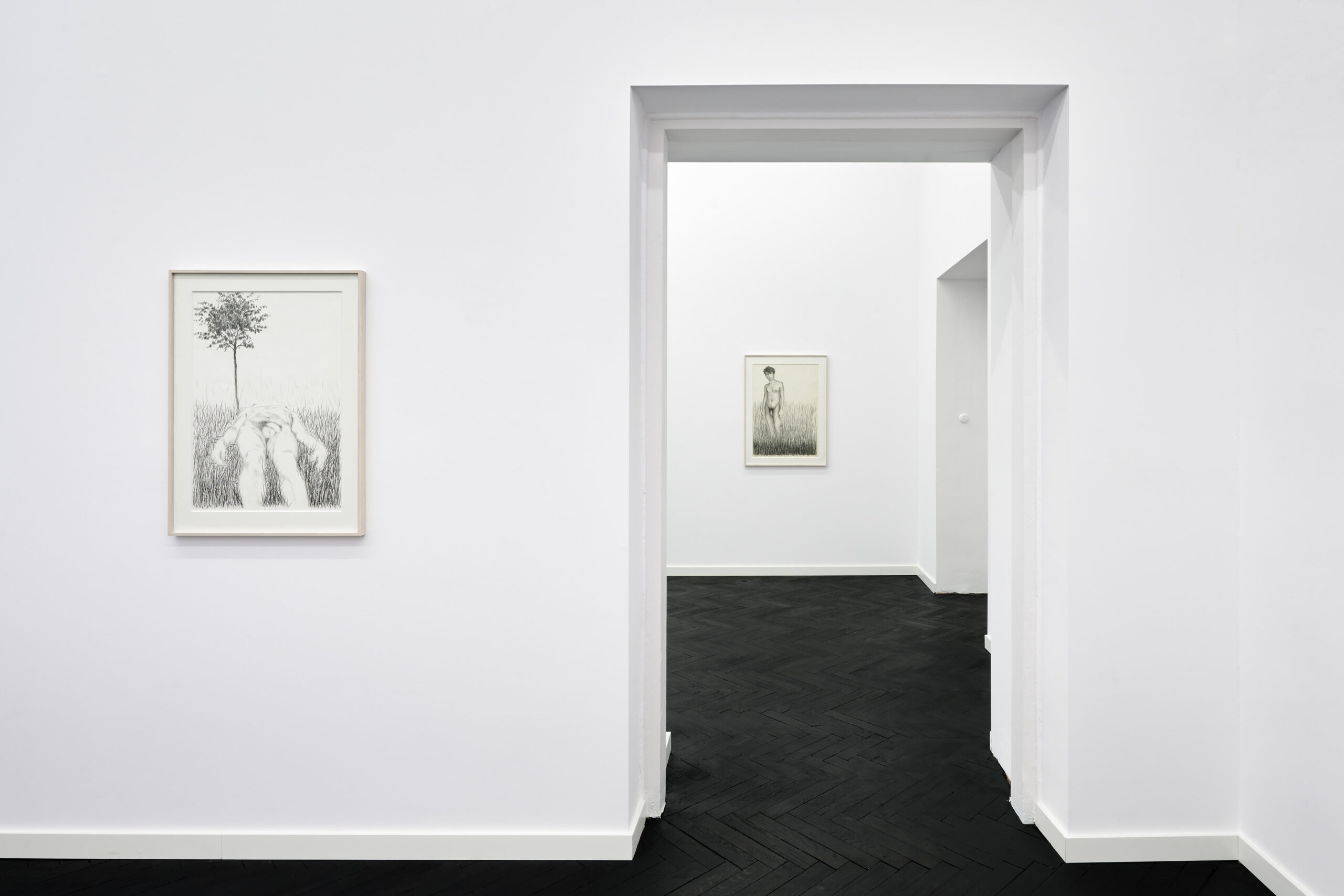
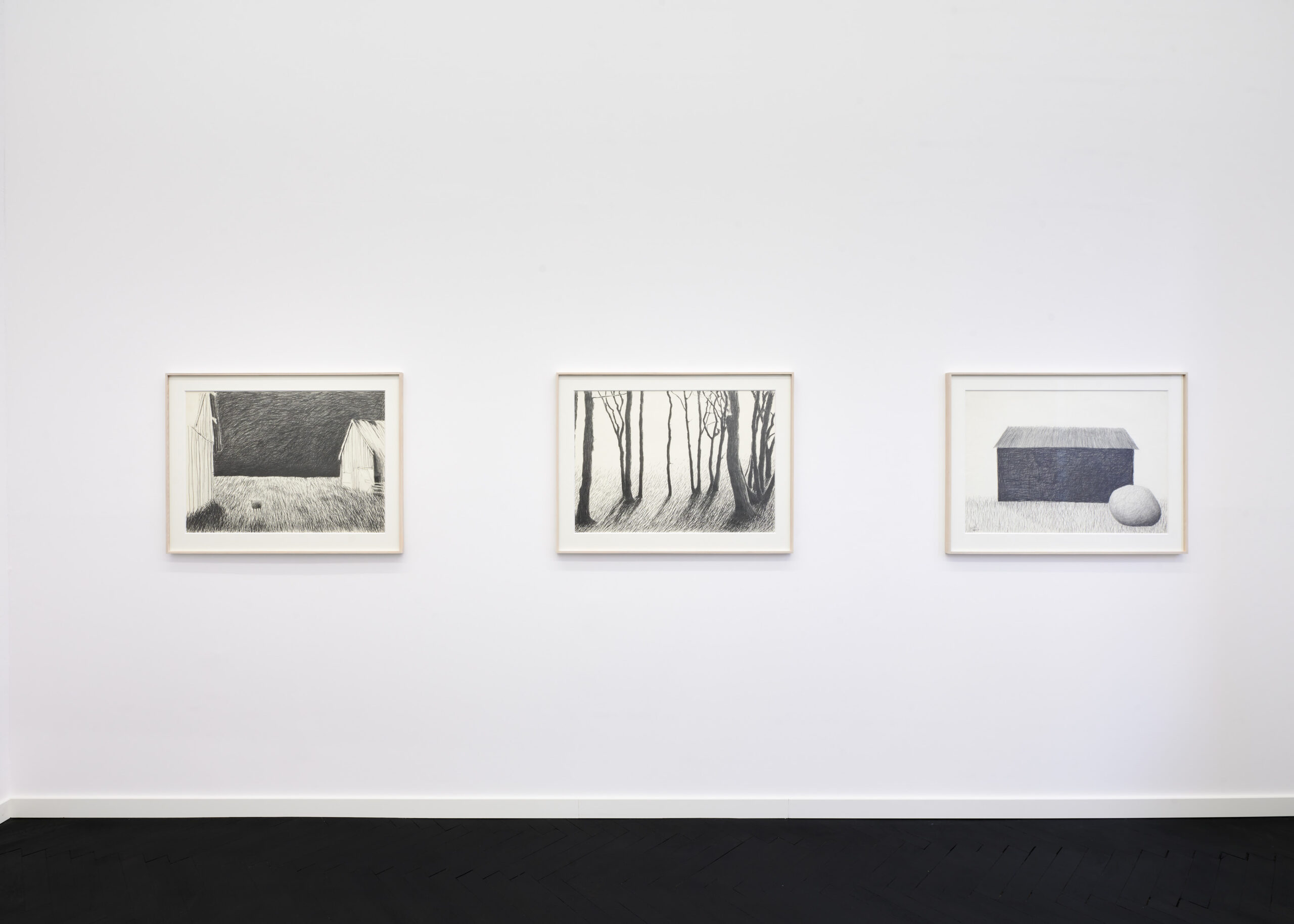
However, in Jung’s landscape, we also come across male naked bodies rendered with reverence. These are bodies still free from shame and unaware of their erotic power. One of the men sleeps under a tree, framed in a shameless perspective reminiscent of Mantegna’s painting The Lamentation Over the Dead Christ. In the tall grass of Jungówka stands Artur and it is difficult to pass by his nudity indifferently. This paradise is inhabited exclusively by men. Thanks to them, Mazovian nature loses its innocence. The quickly sketched blades of grass, a common denominator in many of Jung’s drawings from the 1980s, begin to resemble the fine hairs covering a lover’s skin.
Jung presented his drawings at a solo exhibition Trees in the Middle of the World at the Pokaz Gallery in Warsaw in May 1989. The selection of works suggested at the time that his work was dominated by nature on the one hand and, on the other, by portraits of cultural personalities which he created, among other things, for Zeszyty Literackie, published in Paris.
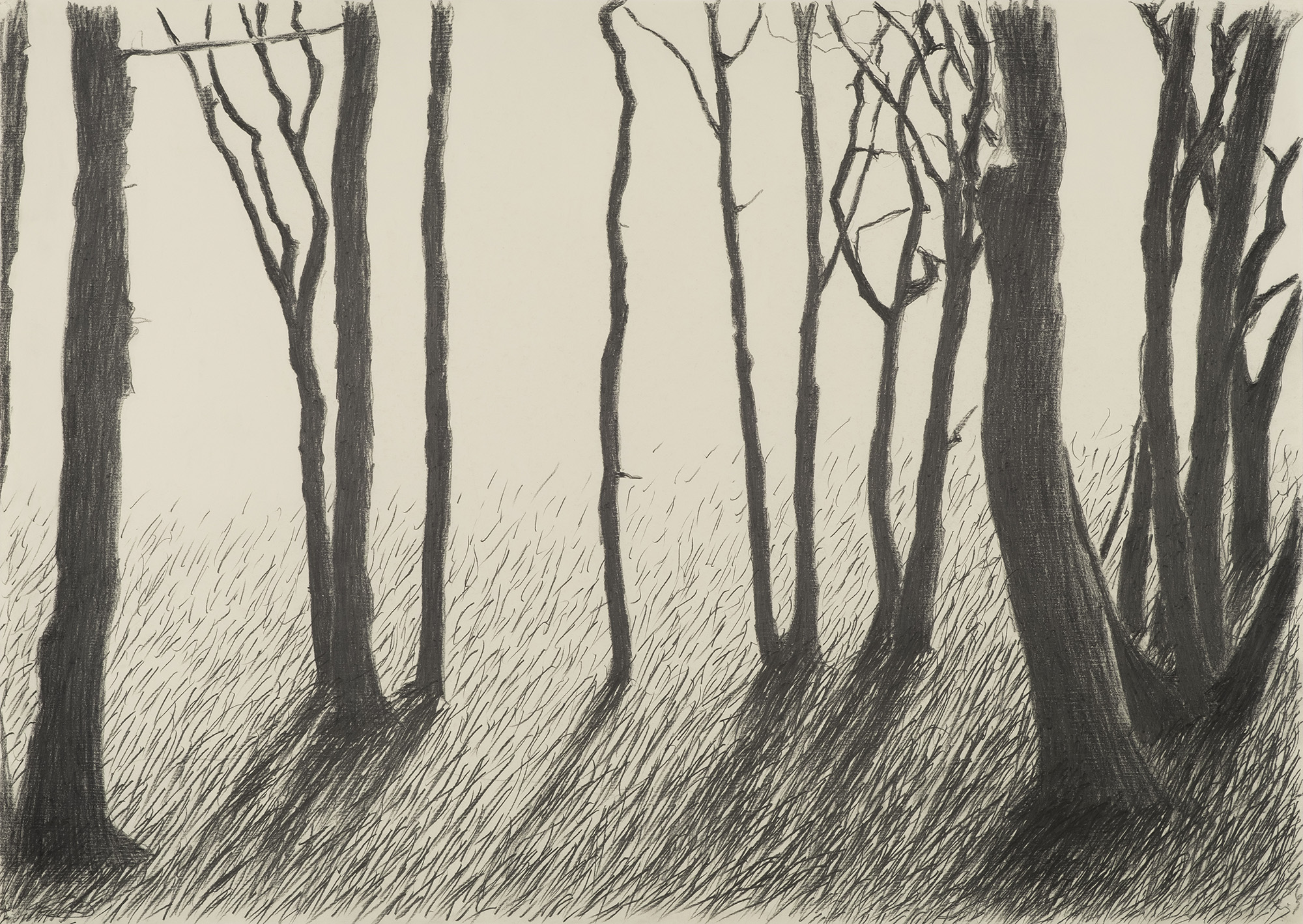

The full extent of Jung’s drawing output was only revealed by his sofa, opened after his death in 1998. Pages and sketchbooks spilled out of it, full of drawn memories of the men he had encountered. It turned out that it was friends, lovers, objects of love, but also himself who were the first subject of his work.
At Krzysztof Jung’s invitation, we once again find ourselves “in the middle of the world”, a space of particular intensity and erotic tension. All that matters is us, here and now. We are not afraid of sin.
Karol Sienkiewicz


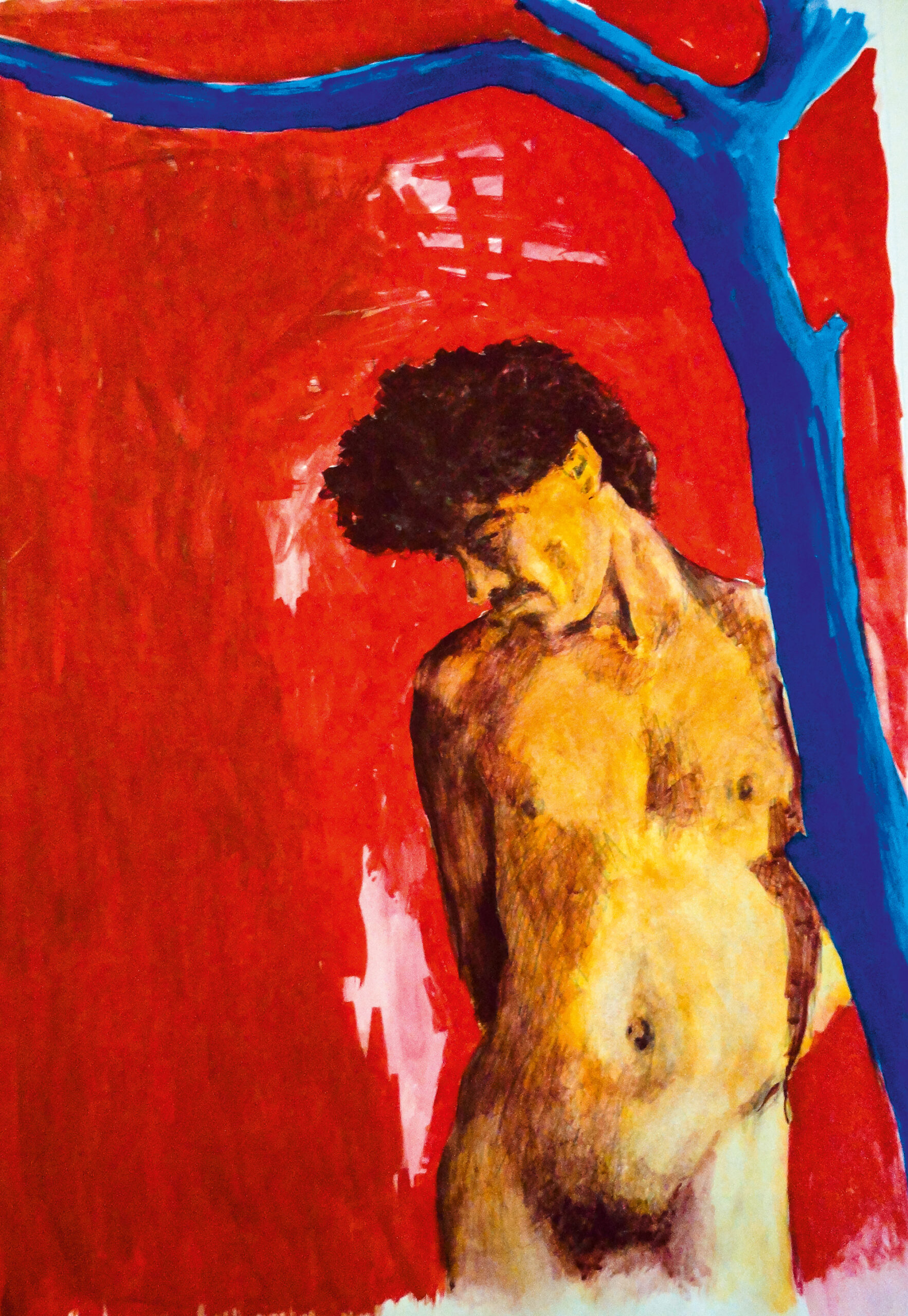
Exhibition views: Błażej Pindor